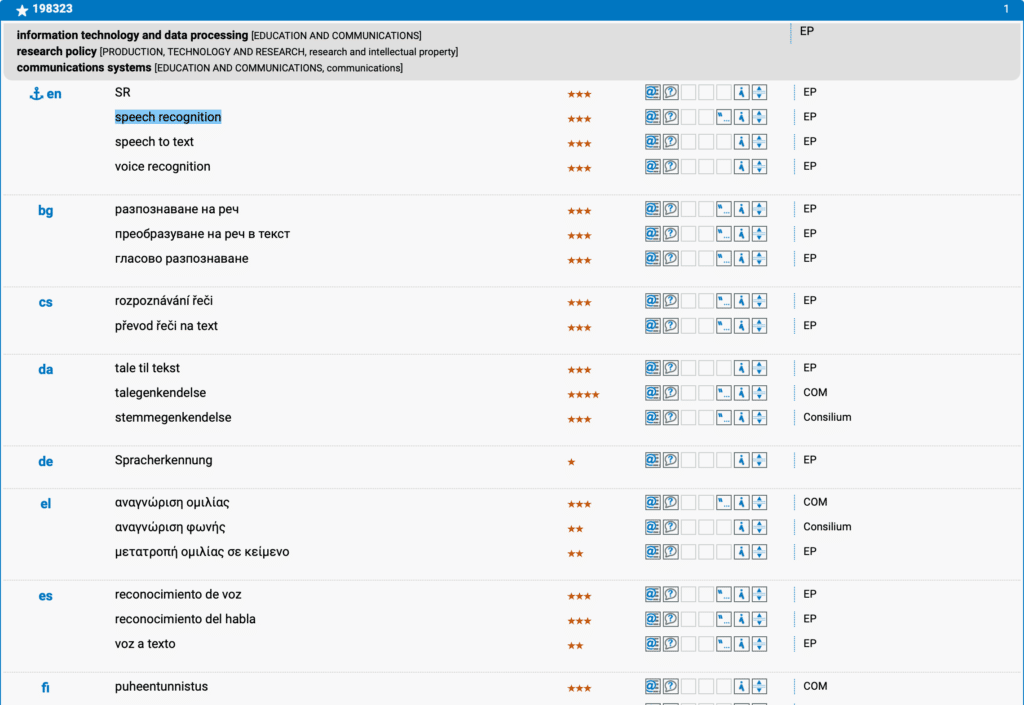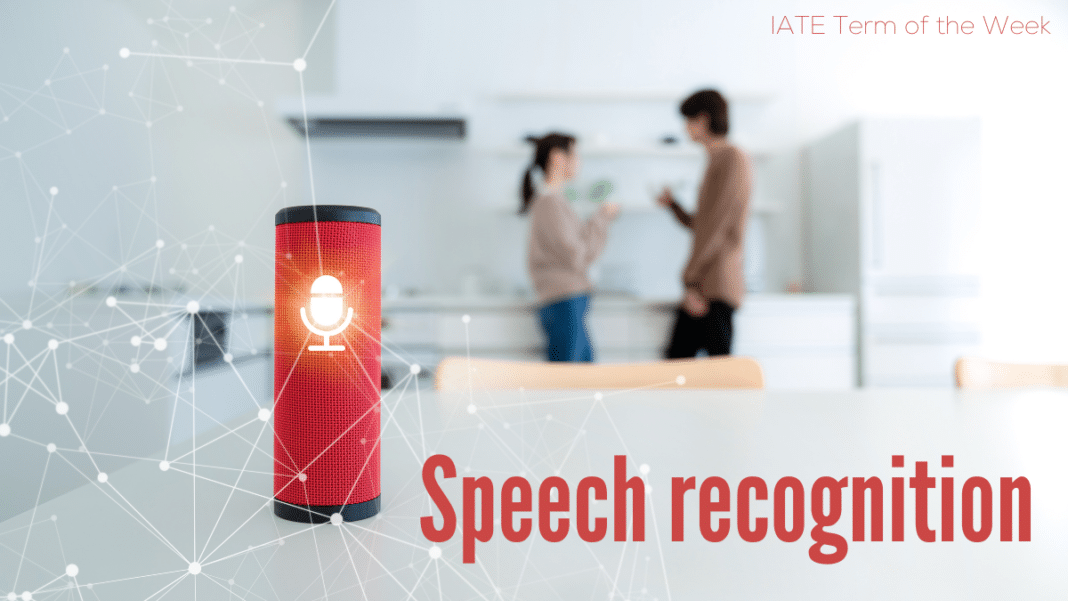Due to vast developments in the artificial intelligence area, speech recognition came into our lives rapidly. Speech recognition, or speech-to-text, is the capability of machines or programmes to identify voice commands and convert them into readable text.
There are different applications for speech recognition. Among the oldest ones there were medical dictation software and automated telephone systems. Speech recognition enables different functions, such as automated translation, print-ready dictation and querying databases. Moreover, it is implemented in personal assistant programmes such as Apple’s Siri.
Speech recognition VS voice recognition
Being often confused with voice recognition, speech recognition is about translating speech from a verbal to a text format, while voice recognition means identifying the user’s voice only. Thus, voice recognition recognises the speaker’s voice while speech recognition recognises the words said, and the words are converted into readable text.

The advantages of speech recognition technology
An advantage of speech recognition technology is that it makes hands-free control of various devices possible, which is of a high priority for disabled people, in the first place. When you are driving, and your eyes and hands are busy, speech recognition comes in handy. This piece of technology allows you to communicate orally with Google Maps or Siri so that you can orientate yourself in an unknown area without having to pull over and consult a map or a phone. Another everyday use of speech recognition is the function available on some smartphones allowing replying to messages without having to type the text.
There are several benefits of speech recognition that could spark the interest of European and international organisations. For instance, speech recognition could be used for the creation of multilingual subtitles. Speech recognition could be beneficial for interpreters during the conferences in the booth, as it can recognise unknown terminology instantly, as well as numbers. Therefore, the implementation of speech recognition would ensure the better quality and accuracy of translations.
How speech recognition works
Before a machine interprets speech, a microphone must convert voice vibrations into an electric signal. Consequently, this signal is converted into a digital signal by the hardware (a computer’s sound card). The next step is to analyse the digital signal through a special speech recognition program to recognise separate phonemes, which will be recombined into words afterwards.
The speech recognition program actively works with the context, as many words sound similar. For instance, if a person pronounces “I like eating”, the next word will be recognised as “ice cream” rather than “I scream” which is pronounced in a similar way. However, the output is not always perfect. Today, the error rates have been reduced to about 5% due to the technological advancements of computer and mobile programs.
Speech recognition is already a part of our daily routine and, considering current trends, it will become even more powerful and widespread in the next years.
References
IBM. 2021. What is Speech Recognition? [ONLINE] Available at: https://www.ibm.com/cloud/learn/speech-recognition [Accessed 9 July 2021].
Encyclopedia Britannica. 2021. Speech recognition. [ONLINE] Available at: https://www.britannica.com/technology/speech-recognition [Accessed 9 July 2021].
European Commission. 2021. European Commission launches Speech Recognition project – Knowledge Centre on Interpretation. [ONLINE] Available at: https://ec.europa.eu/education/knowledge-centre-interpretation/news/european-commission-launches-speech-recognition-project_en [Accessed 9 July 2021].
Knowledge Centre on Interpretation. 2021. Speech recognition – Knowledge Centre on Interpretation European Commission. [ONLINE] Available at: https://ec.europa.eu/education/knowledge-centre-interpretation/knowledge-centre-communities/speech-recognition-0_en [Accessed 9 July 2021].
TechTarget. 2021. What is speech recognition? [ONLINE] Available at: https://searchcustomerexperience.techtarget.com/definition/speech-recognition [Accessed 9 July 2021].
IEEE Signal Processing Society. 2021. What Are the Benefits of Speech Recognition Technology? [ONLINE] Available at: https://signalprocessingsociety.org/publications-resources/blog/what-are-benefits-speech-recognition-technology [Accessed 9 July 2021].
Take Note. 2021. Voice Recognition vs Speech Recognition. [ONLINE] Available at: https://takenote.co/voice-recognition-vs-speech-recognition/ [Accessed 9 July 2021].

Written by Olena Khomiakova, Schuman Communication Trainee Terminology Coordination Unit. Currently she is enrolled as a Master student in Learning and Communications in Multilingual and Multicultural Contexts at the University of Luxembourg.

